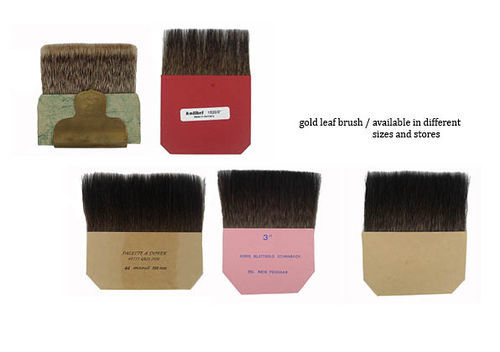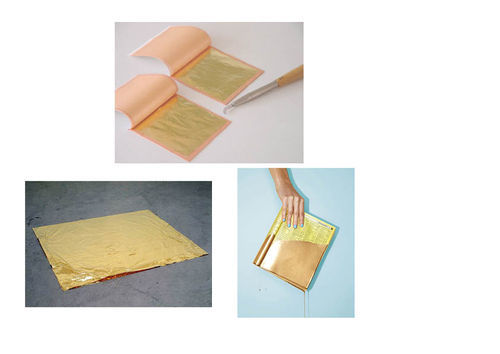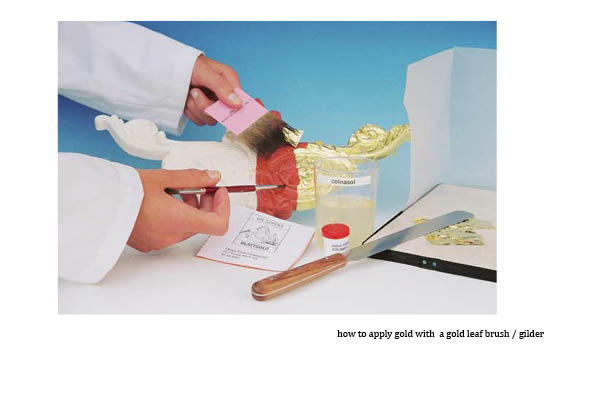''GOLD / FUNCTION OF THE GOLD LEAFS BRUSH''
GILDING /
The term gilding covers a number of decorative techniques for applying fine gold leaf or powder to solid surfaces such as wood, stone, or metal to give a thin coating of gold. A gilded object is described as "gilt". Where metal is gilded, it was traditionally silver in the West, to make silver-gilt (or vermeil) objects, but gilt-bronze is commonly used in China, and also called ormolu if it is Western. Methods of gilding include hand application and glueing, chemical gilding, and electroplating, the last also called gold plating. Parcel-gilt (partial gilt) objects are only gilded over part of their surfaces. This may mean that all of the inside, and none of the outside, of a chalice or similar vessel is gilded, or that patterns or images are made up by using a combination of gilt and un-gilt areas.
GOLD LEAF /
Gold leaf is made by rolling thin sheets of pure gold, alloyed with a small amount of silver, copper or other metal, in presses and placing the thin sheets between vellum sheets, and finally gold beaters' skin, and flattening them out with hammers.
The hammering is carried out until the gold leaves are about 1/300,000 of an inch thick.
These leaves are cut into squares(of around 10 square inches) and laid between the pages of small books, the pages of which are powdered to prevent sticking. Each book contains 25 leaves. The gold should assay at about 22 carats.


